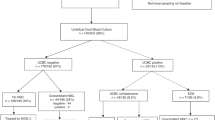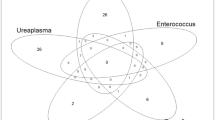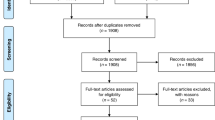Abstract
Objectives
To investigate the IgA levels and bacterial profile in umbilical cord blood (UCB) samples of mothers with risk factors compared to those without risk factors; and to understand the link between UCB culture positivity and neonatal outcomes [early-onset sepsis (EOS) or death within 7 d of life].
Methods
This is a pilot prospective case-control study. Mothers with preterm deliveries (gestational age <34 wk) were enrolled in two groups- Cases: Those with antenatal risk factors (prolonged duration of rupture of membranes of ≥24 h or chorioamnionitis) and controls: Those without these two risk factors. Serum IgA levels was assayed and microbiological culture was tested in UCB samples. 16S sequencing to determine the UCB microbiome was performed in a subset of samples (n = 15). Neonates were followed-up for the occurrence of EOS or death until 7 d of life.
Results
Forty-nine mothers as cases and 50 mothers as controls were consecutively enrolled. No significant difference was observed in the IgA levels (60.5 vs. 58.1 mg/L; p = 0.71), neonatal blood culture positivity (4.1% vs. 8.0%; p = 0.41) and UCB culture positivity (30.6% vs. 26.0%; p = 0.61) in the two groups. No difference was observed between the groups in occurrence of EOS or death within 7 d of life. Proteobacteria, Firmicutes and Actinobacteria were the most abundant phyla. Serratia, Bifidobacterium, Collinsella, Meganomas and Blautia being the most common genera.
Conclusions
Cord blood IgA concentration could not differentiate the neonates at-risk of infection due to its presence in both the groups.


Similar content being viewed by others
References
Liu L, Oza S, Hogan D, et al. Global, regional, and national causes of under-5 mortality in 2000–15: An updated systematic analysis with implications for the Sustainable Development Goals. Lancet. 2016;388:3027–35.
Liu L, Oza S, Hogan D, et al. Global, regional and national causes of child mortality in 2000–13, with projections to inform post-2015 priorities: an updated systematic analysis. Lancet. 2015;385:430–40.
Investigators of the Delhi Neonatal Infection study (DeNIS) collaboration. Characterization and anti-microbial resistance of sepsis pathogens in neonates born in tertiary care centres in Delhi, India: A cohort study. Lancet Glob Health. 2016;4:e752–60.
Shane AL, Sanchez PJ, Stoll BJ. Neonatal sepsis. Lancet. 2017;390:1770–80.
Gitlin D, Gitlin JD. Protein transfer across the placenta. In: Putnam FW, editor. The Plasma Proteins. New York: Academic Press; 1975. p. 264–317.
MurthyI S, Godinho MA, GuddattuI V, Lewis LES, Nair NS. Risk factors of neonatal sepsis in India: A systematic review and meta-analysis. PLoS ONE. 2019;14:e0215683.
Vander Haar EL, Wu G, Gyamfi-Bannerman C, et al Microbial analysis of umbilical cord blood reveals novel pathogens associated with still birth and early preterm birth. mBio. 2022;13:e0203622.
Meena J, Charles MVP, Kali A, Ramakrishnan S, Gosh S, Seetha KS. Utility of cord blood culture in early onset neonatal sepsis. AMJ. 2015;8:263–7.
Boersma ER. Serum immunoglobulins IgG, IgM, and IgA in maternal cord blood pairs from infants of normal and low birthweights in Tanzania. Arch Dis Childhood. 1981;56:31–5.
Lima AD, Franco LC, Sarmiento A, González JM. Delivery route determines the presence of immune complexes on umbilical cord erythrocytes. J Matern Fetal Neonat Med. 2017;30:2647–52.
Meena R, Meena KK, Athwani V, Gothwal S, Bairwa GS, Sitaraman S. Umbilical cord blood culture in diagnosis of early onset neonatal sepsis. Indian J Pediatr. 2020;87:793–7.
Polin JI, Knox I, Baumgart S, Campman E, Mennuti MT, Polin RA. Use of umbilical cord blood culture for detection of neonatal bacteremia. Obstet Gynecol. 1981;57:233–7.
Hansen A, Forbes P, Buck R. Potential substitution of cord blood for infant blood in the neonatal sepsis evaluation. Biol Neonate. 2005;88:12–8.
Beeram MR, Loughran C, Cipriani C, Govande V. Utilization of umbilical cord blood for the evaluation of group B streptococcal sepsis screening. Clin Pediatr (Phila). 2012;51:447–53.
Kalathia MB, Shingala PA, Parmar PN, Parikh YN, Kalathia IM. Study of umbilical cord blood culture in diagnosis of early-onset sepsis among newborns with high-risk factors. J Clin Neonatol. 2013;2:169–72.
Gosalbes MJ, Llop S, Valles Y, Moya A, Ballester F, Francino MP. Meconium microbiota types dominated by lactic acid or enteric bacteria are differentially associated with maternal eczema and respiratory problems in infants. Clin Exper Allergy. 2013;43:198–211.
Stinson LF, Boyce MC, Payne MS, Keelan JA. The not-so-sterile womb: Evidence that the human fetus is exposed to bacteria prior to birth. Front Microbiol. 2019;10. https://doi.org/10.3389/fmicb.2019.01124.
Jimenez E, Fernandez L, Marin ML, et al. Isolation of commensal bacteria from umbilical cord blood of healthy neonates born by cesarean section. Curr Microbiol. 2005;51:270–4.
Moles L, Gomez M, Heilig H, et al. Bacterial diversity in meconium of preterm neonates and evolution of their fecal microbiota during the first month of life. PLoS ONE. 2013;8:e66986.
Zingg W, Soulake I, Baud D, et al. Management and investigation of a Serratia marcescens outbreak in a neonatal unit in Switzerland – The role of hand hygiene and whole genome sequencing. Antimicrob Resist Infect Control. 2017;6:125.
Gastmeier P. Serratia marcescens: An outbreak experience. Front Microbiol. 2014;5. https://doi.org/10.3389/fmicb.2014.00081.
Escribano E, Saralegui C, Moles L, et al. Influence of a Serratia marcescens outbreak on the gut microbiota establishment process in low-weight preterm neonates. PLoS ONE. 2019;14:e0216581.
Mitra S, Panigrahi D, Narang A. Anaerobes in neonatal septicaemia: A cause for concern. J Trop Pediatr. 1997;43:153–5.
Chow AW, Leake RD, Yamauchi T, Anthony BF, Guze LB. The significance of anaerobes in neonatal bacteremia: Analysis of 23 cases and review of the literature. Pediatrics. 1974;54:736–45.
Rio-Aige K, Azagra-Boronat I, Massot-Cladera M, et al. Association of maternal microbiota and diet in cord blood cytokine and immunoglobulin profiles. Int J Mol Sci. 2021;22:1778.
Acknowledgements
The authors acknowledge Research Section, AIIMS, New Delhi to approve the research grant for the study. The authors are immensely appreciative of all the mothers who gave their consent to participate in the study.
Funding
This work was funded by Research Section, AIIMS, New Delhi.
Author information
Authors and Affiliations
Contributions
AJ, KJ, RA: Designed the study and prepared the manuscript; KJ, AJ, AM, VM: Implemented the study; KJ, DJ: Did data cleaning and statistical analysis; KJ, AJ, MJS, AS, SM, RA, DJ: Supervised the implementation of the study and finalized the manuscript. RA will act as the guarantor of the paper.
Corresponding author
Ethics declarations
Ethics Approval
Ethics clearance was obtained from the ethics committee of AIIMS, New Delhi (IEC-407/04.08.2017; RP-13/2017) and MAMC, New Delhi (F.1/IEC/MAMC/59/04/2017/ No.169).
Conflict of Interest
None.
Additional information
Publisher's Note
Springer Nature remains neutral with regard to jurisdictional claims in published maps and institutional affiliations.
Supplementary Information
Below is the link to the electronic supplementary material.
Rights and permissions
Springer Nature or its licensor (e.g. a society or other partner) holds exclusive rights to this article under a publishing agreement with the author(s) or other rightsholder(s); author self-archiving of the accepted manuscript version of this article is solely governed by the terms of such publishing agreement and applicable law.
About this article
Cite this article
Jain, A., Jain, K., Jhurani, D. et al. Umbilical Cord Blood IgA Levels and Bacterial Profile in Preterm Neonates Born with Maternal Risk Factors for Early-Onset Neonatal Sepsis. Indian J Pediatr 91, 541–547 (2024). https://doi.org/10.1007/s12098-023-04708-4
Received:
Accepted:
Published:
Issue Date:
DOI: https://doi.org/10.1007/s12098-023-04708-4




